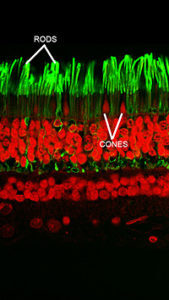Blog
Color Blindness

What is color blindness?
Color blindness is a condition in which your perception of colors is deficient and differs from what most people see. It is more common in men than women.
What causes color blindness?
Color blindness is caused by abnormal photopigments: color-detecting molecules on the “cone” cells of your retina. There are three kinds of color blindness:
- Red-green color blindness, the most common type, which is due to loss or limited function of red cones or green cones.
- Blue-yellow color blindness, which is less common and is due to missing or faulty blue cone cells.
- Complete absence of ability to see color, resulting from the failure of two or all three cone cell photopigments to work properly.
These abnormalities are due to defects in genes, typically on the X chromosome. Color blindness can also result from damage to the eye, optic nerve, or parts of the brain responsible for processing color. Cataracts can also affect color perception if the eye’s lens is yellowed.
How would I know if I was color blind?
You would notice:
- Trouble seeing colors and color brightness.
- Difficulty telling the difference between shades of the same or similar colors.
The best way to know for sure is to see an eye care professional. There are a number of very specific color tests you can have to determine if you are color blind, and if so, what type you have.
Can color blindness be treated?
There is no cure for color blindness, but there are steps you can take to cope with it.
- People with red-green color blindness can use special lenses to help them perceive colors more accurately outdoors, in bright light.
- Visual aids have been developed. Special smart phone and tablet apps may help you better discriminate between colors. These aids can help with daily tasks such as shopping for clothing or fruit.
Source: The National Eye Institute (NEI)
Join our Mission
Lighthouse Guild is dedicated to providing exceptional services that inspire people who are visually impaired to attain their goals.
